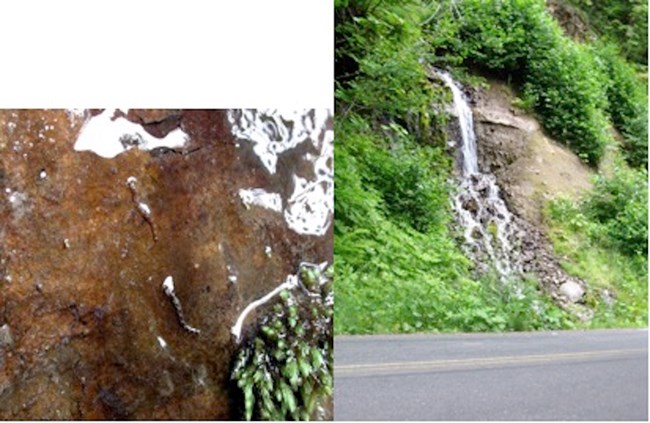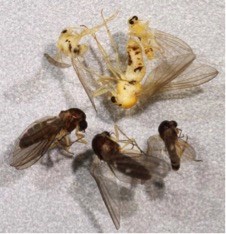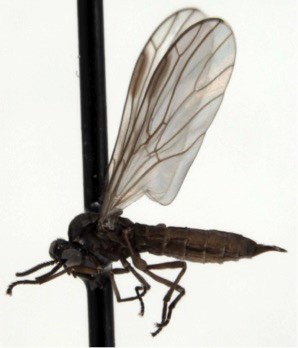Last updated: August 8, 2017
Article
Thaumaleidae of Mount Rainier National Park

Introduction
The Thaumaleidae (Diptera) or seepage midges are a small family with some 182 described species worldwide. The immature stages are restricted to thin films of flowing water, know as madicolous or hygropetric habitats, and are formed at the edge of waterfalls, splash zones on boulders in cascading streams and roadcut seeps (Figure 1). Larvae feed on diatoms scraped from rock surfaces and adults are encountered on riparian vegetation or overhanging rocks. In North America three genera are recorded, with five species known from the east and 23 from the west.

Trends and Status
The western North American species were last studied nearly 20 years ago, but on very limited material and most species were known from three or fewer localities. The Pacific Northwest is a hot spot for diversity in Nearctic seepage midges with 15 of 27 species recorded from this region. Mt. Rainier National Park is the type locality for two species based on specimens collected in the 1910s and 1920s. The purpose of this study is to re-collect these two species to aid in the genetic identification of the species. In addition, an estimate of the total diversity of the seepage midges of Mt. Rainier will be invested by sampling appropriate micro-habitats (Figure 1).
In July 2012, a male and female specimen was collected along small streams flowing across the Comet Falls trail. These specimens are likely Androprosopa zelmae (type locality: Van Trump Creek). The second recorded species (A. gillespieae – type locality: Hansen Camp) was not identified among the new material collected. Additional species also collected on Mt. Rainier include: A. anolo and A. lindsayorum.
Another species (A. confracta) was possibly collected along Skate Creek Road, south of the Park boundaries. Species identification has not yet been completed or confirmed (awaiting start date of graduate student).

Discussion
While sweep netting for adult seepage midges (below Paradise) a very interesting fly specimen was collected (Figure 3). This single female specimen represents a new genus and species of the family Axymyiidae. This is only the second specimen known of this undescribed taxon, which was previously collected in 1962 from Alaska. This is a very interesting discovery and male specimens are hoped to be discovered during the next field season.
